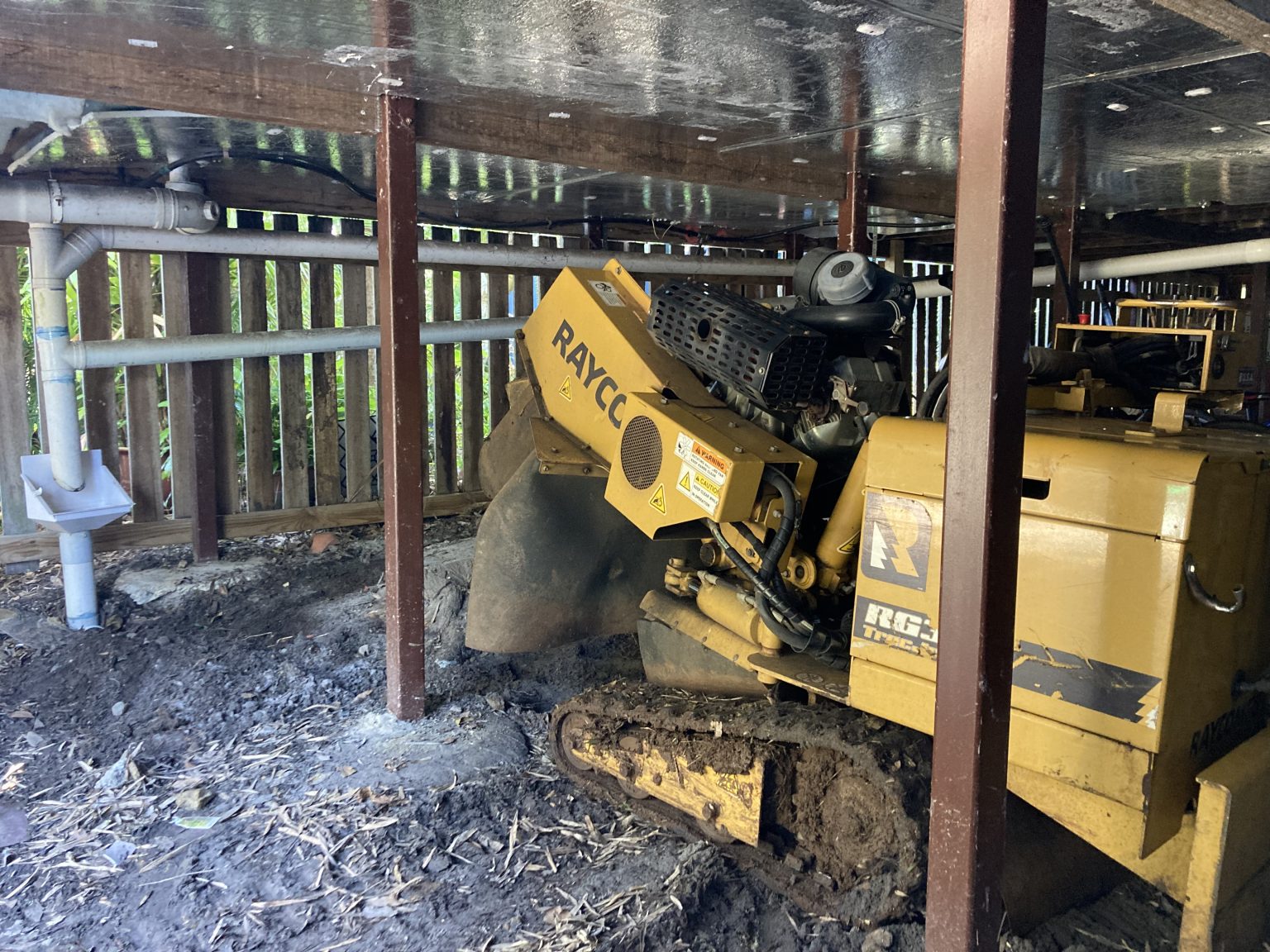
Stump Grinder Buying Guide

Removing tree stumps can be one of the most challenging tasks for homeowners and professionals alike. While there are various methods for getting rid of stumps, a stump grinder is often the most effective and efficient tool to handle the job.
Whether you’re a landscaping professional or a DIY homeowner, choosing the perfect stump grinder can make a significant difference in your project. This guide covers the types of stump grinders available, key features to consider, and tips to help you make the right choice.
Understanding the Basics: What Is a Stump Grinder?
A stump grinder is a power tool that removes tree stumps by chipping away the wood with a rotating cutting disk. The machine grinds the stump down to ground level (or even below), allowing you to plant grass, trees, or other landscaping elements over it.
Stump grinders range in size, power, and design, and understanding the different types available will help you pick one that fits your needs.
Types of Stump Grinders
There are several types of stump grinders to consider, each with its own advantages and ideal uses which we’ve listed below.
Handheld or Portable Stump Grinders
Best for: Small stumps, residential use, DIY projects
Compact and lightweight, handheld stump grinders (also known as a handlebar grinder) are easy to transport and manoeuvre around small spaces. Handlebar grinders are typically powered by gas engines and are less powerful than larger grinders such as wheeled walking grinders, but they work well for lighter jobs such as grinding stumps that are smaller.
Pros: Portable, easy to store, affordable
Cons: Limited power, not suitable for large stumps
Walk-Behind Stump Grinders
Best for: Medium-sized stumps, residential and light commercial use
With a push-and-pull operation, walk-behind grinders are larger than handheld grinders but still manageable. These wheeled grinders have more powerful engines and are designed to remove tree stumps that are medium in size.
Pros: Higher power than handheld models, easier to operate, suitable for small to medium stumps
Cons: Heavier and harder to manoeuvre on rough terrain
Self-Propelled Stump Grinders
Best for: Larger stumps, heavy-duty commercial and professional use
Self-propelled grinders are larger and often come with a hydraulic drive system, making them easier to move and position around the stump. They have powerful engines and are ideal for tackling large stumps quickly.
Pros: High power, easier to manoeuvre on uneven terrain, handles large stumps
Cons: Expensive, heavy, may require more maintenance
Tow-Behind Stump Grinders
Best for: Professional landscapers, large property projects
Designed to be towed behind a vehicle, these machines can grind stumps ranging from 14-32 inches in height and 8-12 inches in depth, depending on the grinder type (tracked grinders, wheeled grinders, etc.) which is considerably more powerful than the three stump grinders above.
Pros: Highly powerful, suitable for large-scale projects
Cons: Expensive, requires a vehicle to tow, not suited for small areas
Riding Stump Grinders
Best for: High-volume commercial use, large areas with multiple stumps
Riding grinders resemble small tractors and are typically used by professional landscapers and tree care companies due to their highly efficient ability to remove numerous large stumps quickly.
Pros: Fast and efficient, minimal operator effort, ideal for large jobs
Cons: Very costly, requires a skilled operator, limited use for residential needs
Key Features to Consider
When buying a stump grinder, it’s essential to pay attention to the following features to make sure it fits your needs and budget.
Engine Power
Stump grinders are generally powered by gasoline or diesel engines. Horsepower (HP) is a crucial factor, as it directly impacts grinding efficiency. More powerful engines handle larger stumps and tougher wood types more easily.
Tip: For small to medium stumps, 10-15 HP is often sufficient. For larger or multiple stumps, look for models with 20+ HP.
Cutting Depth and Width
The cutting depth and width determine how much of the stump you can grind in one go. A greater cutting depth allows you to grind the stump further below ground, which is ideal if you plan to replant over the area.
Tip: Choose a grinder with at least 12 inches of cutting depth for flexibility.
Cutting Wheel Size and Teeth
The cutting wheel and teeth play a crucial role in grinding efficiency as larger wheels and durable, sharp teeth allow for quicker and more efficient stump removal.
Tip: Carbide-tipped teeth are the most durable and effective option for long-term use.
Weight and Portability
The weight and design of the grinder influence portability and ease of manoeuvring. For example, handheld and walk-behind models are more portable, while self-propelled models are easier to use on challenging terrain.
Tip: If you’re working on sloped or rough terrain, consider a self-propelled model for easier manoeuvring.
Safety Features
Safety is paramount when operating a stump grinder. Look for models with protective guards around the cutting wheel, emergency shut-off switches, and handles that provide a firm grip.
Tip: Some grinders come with automatic shut-off mechanisms that stop the cutting wheel if the grinder is lifted or tilted unexpectedly.
Ease of Maintenance
A stump grinder will require regular maintenance, including replacing or sharpening teeth and checking the engine and cutting wheel. Opt for models with easy access to components for quick maintenance.
Tip: Look for grinders with straightforward parts and a good supply of replacement teeth to save time and money on repairs.
Additional Considerations
Budget
Stump grinders vary widely in price, from a few hundred dollars for basic, portable models to several thousand for professional-grade grinders. Determine your budget based on the size of your project and frequency of use.
Job Frequency
For a single stump or occasional use, renting a stump grinder might be more economical. However, for frequent use or larger projects, investing in your own stump grinder could save you money in the long run.
Storage Space
Consider where you’ll store your stump grinder when it’s not in use. Smaller grinders are easier to store in a garage or shed, while larger, tow-behind or riding models require substantial space.
Rental vs. Purchase
If you only need a stump grinder occasionally, consider renting one. However, for frequent use, owning your own grinder is more cost-effective.
Buying Tips for First-Time Buyers
- Research Local Dealers and Reviews: Look for reputable dealers that offer warranty and support. Read user reviews to get insights into durability and performance.
- Check for Demonstrations: Many dealers offer demonstrations, allowing you to test the machine and understand its handling.
- Think About Resale Value: Quality stump grinders retain resale value. Choose a brand and model with good customer feedback and after-market demand if you plan to sell it eventually.
- Try Before You Buy: If possible, rent the model you’re considering to ensure it meets your needs.
Conclusion
Choosing the right stump grinder depends on your specific needs, the size of the stumps you’ll be working on, and your budget. Understanding the various types and features will help you make an informed decision, whether you’re handling a small residential project or need professional-grade equipment. By following our stump grinder buying guide, you’ll be well-prepared to select a stump grinder that suits your project and investment preferences.
FAQ
Do you offer Vermeer stump grinders as well as the full Bandit stump grinder range?
We currently offer Rayco stump grinding machines, known for their reliability and power. While we don’t carry Vermeer or Bandit models at the moment, we’re working on expanding our selection to include additional brands soon.
How can I get in touch with your team?
You may click here to get in touch with one of our team members.
- Tamworth
- 143 Gunnedah Rd, West Tamworth NSW 2340
- (02) 6755 6000
- Sydney
- 49-50 Cassola Pl, Penrith NSW 2740
- (02) 8678 5537
- Melbourne
- 24-28 Williams Rd, Dandenong South VIC 3175
- (03) 9791 7178
- Brisbane - Caboolture
- 2 Alta Road, Caboolture QLD 4510
- Brisbane - Crestmead
- 191 Magnesium Dr, Crestmead QLD 4132
- Perth
- 11 Reihill Rd, Maddington WA 6109




